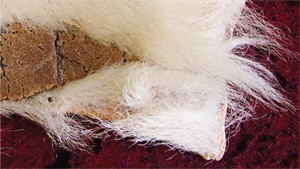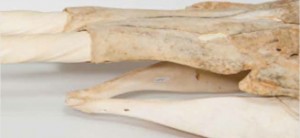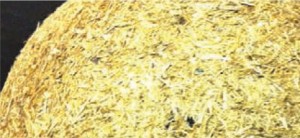
Three years ago, the first issue of Canadian Geographic featuring the ‘What’s This?’ contest hit newsstands. Ever since, this regular series has been a staple in the magazine, which is published on a bimonthly basis by the Royal Canadian Geographic Society, the largest not-for-profit educational organization in Canada.
Canadian Geographic is read by an estimated 3 million Canadians every issue. It features award-winning articles on adventure, exploration, photography, wildlife, travel and cartography. The magazine has reported on Canada’s natural heritage since 1930.
The Canadian Heritage Information Network (CHIN) is therefore proud to be able to partner with this prestigious organisation in the production of original content – even if the ‘What’s This?’ column is only a small part of the overall magazine!

April 2016: Sunflower sea star. Submitted by the Beaty Biodiversity Museum at the University of British Columbia (UBC). Find out more on the Canadian Geographic website.
How It Works
This ongoing collaboration allows any CHIN contributor to suggest an object for the magazine. Thus far, this initiative has proven very popular with Canadian institutions. In fact, we have received more submissions than Canadian Geographic has been able to publish. But the museums and heritage institutions that were selected all got a unique chance to showcase a memorable artefacts from their collection and raise their visibility.

April 2014: Klondike coin. Submitted by the Currency Museum of the Bank of Canada in Ottawa. Find out more on the Canadian Geographic website.
To date, more than a dozen Canadian institutions have decided to share their stories with the Canadian public through the ‘What’s This?’ feature. Past participants include a wide range of organisations, including large national museums like the Canadian Museum of History, provincial institutions like the Museum of Ontario Archaeology, as well as local museums like Musée de la nature et des sciences de Sherbrooke.

December 2013: Polar bear paw. Submitted by the Zoo Sauvage de St-Félicien in Quebec. Find out more on the Canadian Geographic website.
First Object
In the initial edition, we presented a zoomed-in version of the Victoria Cross as the first clue. As usual, the object and its identity weren’t revealed until the next month’s issue. Readers were encouraged to send their guesses to Canadian Geographic for a chance to win a free one-year subscription to the magazine.

October 2013: The Victoria Cross. Submitted by the Canadian War Museum in Ottawa (photo taken by the Air Force Heritage Museum and Air Park in Winnipeg). Find out more on the Canadian Geographic website.
In the case of the Victoria Cross, the item was submitted by the Canadian War Museum and was featured prominently in their ‘Valour Road’ exhibit that has travelled the country, most recently at the Manitoba Museum in Winnipeg.
In all, 96 Canadian soldiers received the Victoria Cross. Many of the portraits of these heroic soldiers are also part of the Canadian War Museum’s online contribution to Artefacts Canada, a national inventory of museum objects hosted by CHIN. Other similar medals from institutions across Canada – including the Glenbow Museum in Calgary – are included in Artefacts Canada as well (along with accompanying details and photos when available).
The Only Prerequisite is to Be Part of CHIN’s Network
For institutions that haven’t yet submitted an item, it’s never too late. Plus, it’s very easy to participate. Just send us an email at pch.rcip-chin.pch@canada.ca and we will send you a simple 1 page template where you can insert your image, description, photo credit and contact information. That’s pretty much all we need.

June 2015: Narwhal skull. Submitted by the Vancouver Aquarium Marine Science Centre. Find out more on the Canadian Geographic website.
And for the institutions who have already made their way into the publication, there’s no limit to the number of entries an organization can submit, so please keep those ideas coming! We encourage you to choose mysterious and original objects – relating to such topics as the environment, textiles, the arts, agriculture, sciences and technology, to name a few. There is usually no predetermined theme, although the December issue typically focuses on wildlife.

October 2015: Albertosaurus sarcophagus tooth. Submitted by the Royal Tyrrell Museum of Palaeontology in Alberta. Find out more on the Canadian Geographic website.
As we announced when the initiative was launched, this multi-year collaboration gives Canadian museums the opportunity to feature an artefact (object) in the magazine to promote the history and geography of Canada. Since its debut, the response from our contributors has been overwhelmingly positive. We would also like to thank all the institutions that participated. You can view all the previously selected entries, along with their answers, on the Canadian Geographic website.

January 2015: Ruppia ball. Submitted by the Shawnigan Lake Historical Society in British Columbia. Find out more on the Canadian Geographic website.




January 2017
0 Comment